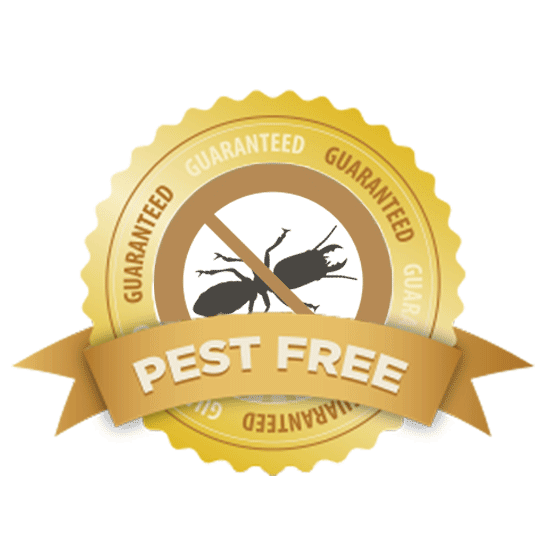Bed Pest Treatment Failure: Contrasting Chemical Vs. Non-Chemical Solutions
In the realm of bug control, specifically when managing the persistent problem of bed pests, the option in between chemical and non-chemical treatment remedies can be a crucial one. Both techniques use distinct benefits and disadvantages, affecting factors such as efficiency, security factors to consider, and general price. By examining the nuanced details of each approach, a clearer understanding of which course to go after in attending to a bed pest invasion can be obtained.
Effectiveness of Chemical Treatments
Chemical therapies for bed pest infestations have actually been commonly acknowledged for their powerful and rapid effectiveness in eliminating these insects. When thinking about the efficiency of chemical therapies, it is vital to recognize that they can supply a detailed and quick solution to a bed bug trouble. Specialist exterminators typically count on pesticides to target bed bugs at various stages of their life process, including grownups, fairies, and eggs. These chemicals typically work by interrupting the bed insects' nerves, leading to paralysis and ultimate death.
Furthermore, chemical therapies have the advantage of providing recurring effects, indicating that they can proceed to get rid of bed pests also after the initial application. This residual activity is specifically helpful in combating any potential re-infestations. In addition, the fast action of chemical treatments can bring relief to people facing severe bed pest infestations, enabling them to reclaim control of their living spaces rapidly.
Safety Concerns With Chemical Solutions
One critical aspect that requires cautious consideration when utilizing chemical services for bed bug treatment is making certain the security of owners and the environment. Exposure to particular chemicals utilized in bed pest treatments can lead to respiratory system concerns, skin inflammation, or other negative responses, especially in individuals with pre-existing problems or sensitivities.
Additionally, the environmental influence of chemical services is an additional considerable factor to consider. Some pesticides utilized in bed bug therapies might be damaging to advantageous pests, wildlife, and ecosystems if they seep into the soil or water systems. It is vital to utilize chemical treatments judiciously, following safety guidelines, and considering less hazardous choices to minimize these dangers and make sure the effective and safe monitoring of bed pest infestations.
Benefits of Non-Chemical Techniques
Considering the prospective safety worries and ecological impact connected with chemical remedies for bed bug therapy, checking out non-chemical approaches offers an appealing alternative with several distinctive benefits. Non-chemical therapies are ecologically external pest control friendly, as they do not add to air or water pollution, making them a sustainable selection for pest control.
In addition, non-chemical services can be efficient in targeting bed pests, including hard-to-reach locations where chemical therapies might not penetrate - A1 pest control services charlotte. Methods such as warm therapy, vacuuming, steam cleansing, and mattress coverings supply comprehensive obliteration without the usage of hazardous chemicals.
Limitations of Non-Chemical Treatments

In addition, non-chemical therapies usually require numerous applications to attain successful elimination. This can be lengthy and may not constantly ensure complete elimination of all bed bugs and their eggs, particularly in hard-to-reach or covert areas.
Additionally, the success of non-chemical treatments greatly counts on correct implementation and thoroughness, which can be challenging for individuals without specialist expertise. Inadequate application of non-chemical techniques might result in incomplete obliteration, causing relentless infestations and the requirement for additional treatments.
Consequently, while non-chemical therapies have their advantages, it is necessary to recognize these restrictions and consider them when determining the most effective strategy for handling bed bug infestations.
Cost Comparison: Chemical Vs. Non-Chemical Options
Provided the constraints related to non-chemical treatments, a vital aspect to examine in the context of bed bug administration is the expense comparison between chemical and non-chemical choices. Chemical therapies commonly entail the application of pesticides web by professionals, which can range from $250 to $900 per room, relying on the severity of the infestation and the size of the location to be treated. In contrast, non-chemical treatments like heat therapy or heavy steam can be extra pricey, with prices varying from $1,000 to $6,000 for a whole home. While the first expense of chemical therapies might seem lower, several therapies might be required to totally remove the invasion, potentially boosting the total cost. On the various other hand, non-chemical choices may provide a much more lasting and green option, although they can be cost-prohibitive for some individuals. Ultimately, when thinking about the expense of bed insect treatment choices, it is essential to consider the upfront expenses against the efficiency and lasting sustainability of the chosen method.
Final Thought

Taking into consideration the potential security issues and ecological influence connected with chemical options for bed bug treatment, exploring non-chemical strategies presents an encouraging alternative with a number of unique advantages.Given the constraints associated with non-chemical treatments, an essential facet to examine in the context of bed bug administration is the cost contrast in between chemical and non-chemical alternatives. In contrast, non-chemical therapies like warmth therapy or vapor can be a lot more costly, with prices ranging from $1,000 to $6,000 for an entire how to control pest at home home. While the first price of chemical therapies might appear reduced, several treatments may be called for to totally eliminate the problem, potentially increasing the general price.In conclusion, when comparing chemical and non-chemical bed insect therapy options, it is crucial to think about effectiveness, safety, benefits, limitations, and cost.
Comments on “A1 Pest Control Charlotte NC Bed Bugs - Professional Extermination Services”